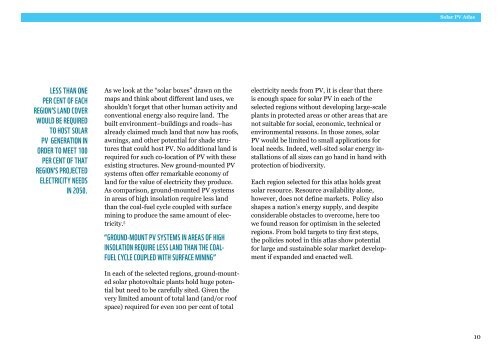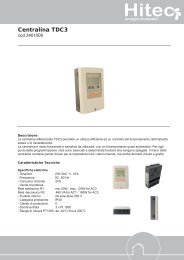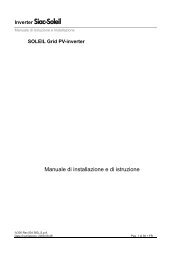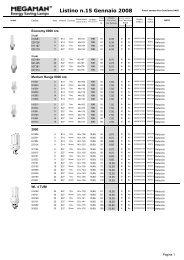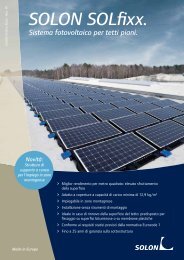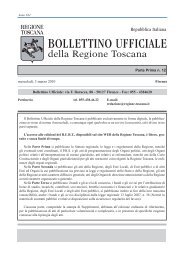Solar PV Atlas: Solar Power in Harmony with Nature - WWF
Solar PV Atlas: Solar Power in Harmony with Nature - WWF
Solar PV Atlas: Solar Power in Harmony with Nature - WWF
You also want an ePaper? Increase the reach of your titles
YUMPU automatically turns print PDFs into web optimized ePapers that Google loves.
<strong>Solar</strong> <strong>PV</strong> <strong>Atlas</strong><br />
LESS THAN ONE<br />
PER CENT OF EACH<br />
REGION’S LAND COVER<br />
WOULD BE REQUIRED<br />
TO HOST SOLAR<br />
<strong>PV</strong> GENERATION IN<br />
ORDER TO MEET 100<br />
PER CENT OF THAT<br />
REGION’S PROJECTED<br />
ELECTRICITY NEEDS<br />
IN 2050.<br />
As we look at the “solar boxes” drawn on the<br />
maps and th<strong>in</strong>k about different land uses, we<br />
shouldn’t forget that other human activity and<br />
conventional energy also require land. The<br />
built environment–build<strong>in</strong>gs and roads–has<br />
already claimed much land that now has roofs,<br />
awn<strong>in</strong>gs, and other potential for shade strutures<br />
that could host <strong>PV</strong>. No additional land is<br />
required for such co-location of <strong>PV</strong> <strong>with</strong> these<br />
exist<strong>in</strong>g structures. New ground-mounted <strong>PV</strong><br />
systems often offer remarkable economy of<br />
land for the value of electricity they produce.<br />
As comparison, ground-mounted <strong>PV</strong> systems<br />
<strong>in</strong> areas of high <strong>in</strong>solation require less land<br />
than the coal-fuel cycle coupled <strong>with</strong> surface<br />
m<strong>in</strong><strong>in</strong>g to produce the same amount of electricity.<br />
5<br />
“GROUND-MOUNT <strong>PV</strong> SYSTEMS IN AREAS OF HIGH<br />
INSOLATION REQUIRE LESS LAND THAN THE COAL-<br />
FUEL CYCLE COUPLED WITH SURFACE MINING”<br />
In each of the selected regions, ground-mounted<br />
solar photovoltaic plants hold huge potential<br />
but need to be carefully sited. Given the<br />
very limited amount of total land (and/or roof<br />
space) required for even 100 per cent of total<br />
electricity needs from <strong>PV</strong>, it is clear that there<br />
is enough space for solar <strong>PV</strong> <strong>in</strong> each of the<br />
selected regions <strong>with</strong>out develop<strong>in</strong>g large-scale<br />
plants <strong>in</strong> protected areas or other areas that are<br />
not suitable for social, economic, technical or<br />
environmental reasons. In those zones, solar<br />
<strong>PV</strong> would be limited to small applications for<br />
local needs. Indeed, well-sited solar energy <strong>in</strong>stallations<br />
of all sizes can go hand <strong>in</strong> hand <strong>with</strong><br />
protection of biodiversity.<br />
Each region selected for this atlas holds great<br />
solar resource. Resource availability alone,<br />
however, does not def<strong>in</strong>e markets. Policy also<br />
shapes a nation’s energy supply, and despite<br />
considerable obstacles to overcome, here too<br />
we found reason for optimism <strong>in</strong> the selected<br />
regions. From bold targets to t<strong>in</strong>y first steps,<br />
the policies noted <strong>in</strong> this atlas show potential<br />
for large and susta<strong>in</strong>able solar market development<br />
if expanded and enacted well.<br />
10


